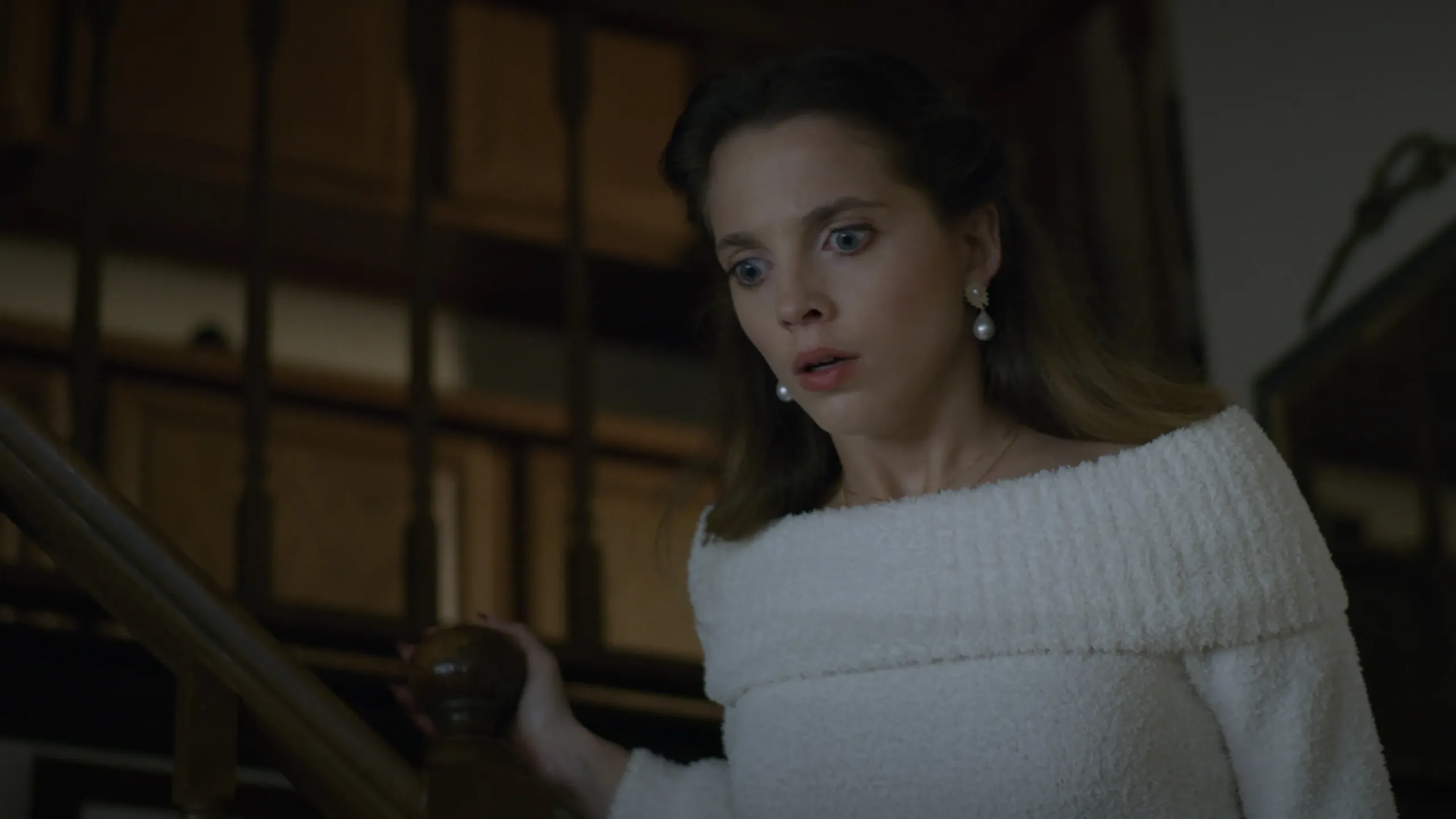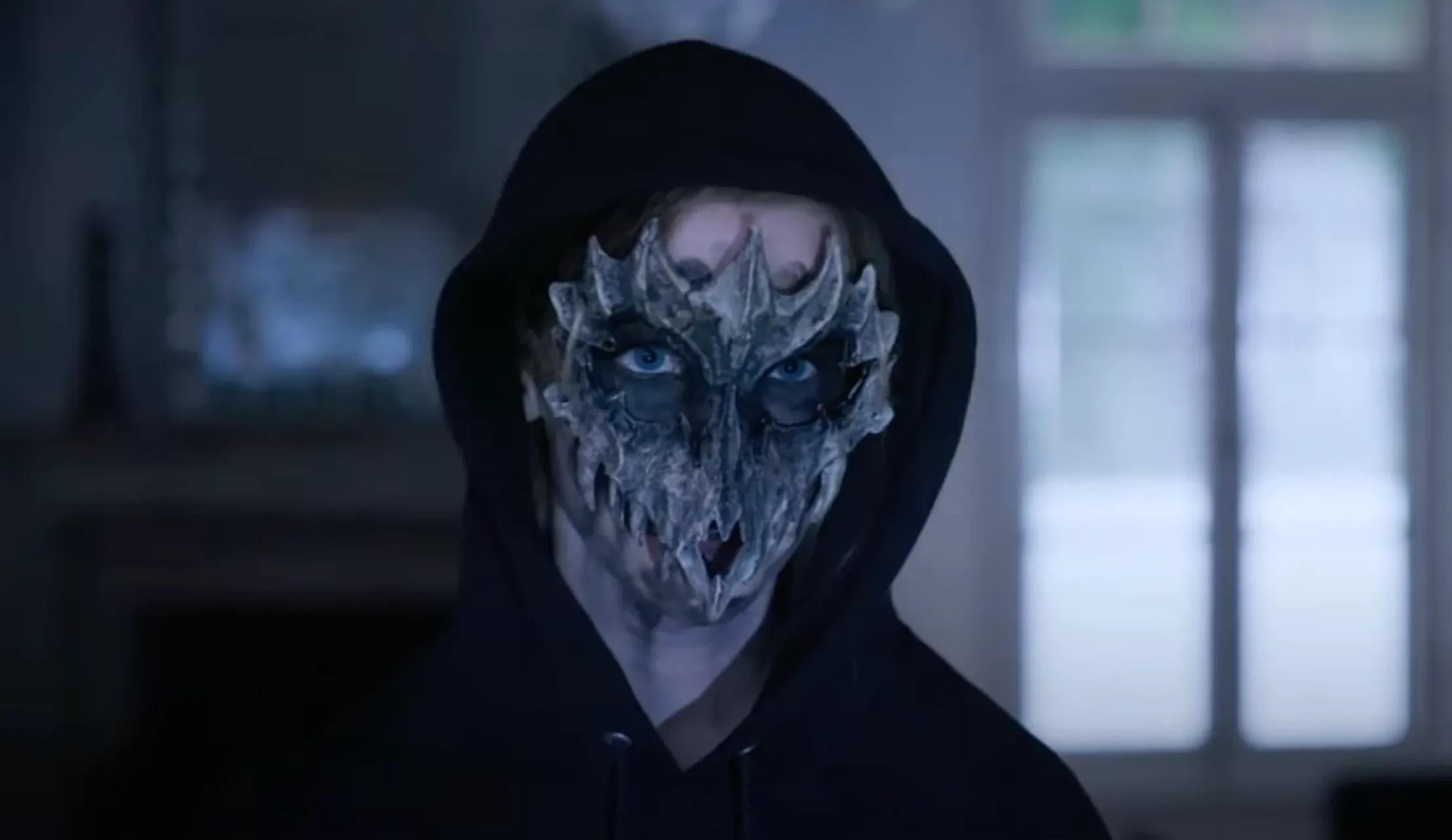The story of When It Rains in LA centers on Sasha, a young widow grappling with her husband Nate’s sudden and tragic death, complicated by a mysterious mask he acquired before dying. Seeking solace, Sasha travels to Los Angeles, reuniting with old friends to find healing.
The narrative echoes a familiar theme: a woman escaping trauma, hoping a new environment will offer respite. Yet, Los Angeles proves far from the sanctuary Sasha envisions.
The film subverts traditional storytelling. What begins as a straightforward drama quickly transforms into a genre-blending narrative, intertwining horror and mystery elements. The storm—both literal and symbolic—arrives as Sasha reaches LA.
Rain in a city known for constant sunshine takes on an eerie, almost mystical significance. This meteorological event becomes a trigger, thrusting Sasha and her companions into increasingly strange and perilous circumstances. The unexpected narrative shift feels seamlessly connected to the story’s deeper exploration of grief and personal transformation.
Tension escalates as a menacing stalker begins targeting Sasha, with threatening phone calls evolving into direct confrontations. The emergence of Anna and William introduces additional complexity, driving the group toward a violent encounter.
The rain-drenched climax compels Sasha to face not only external dangers but also the shadowy recesses of her inner self, creating a powerful narrative that feels both familiar and distinctively engaging through its atmospheric intensity and building suspense.
Characters and Performances: The Weight of Grief in a City Drenched in Mystery
Sasha’s emotional odyssey drives When It Rains in LA, with Monroe Cline delivering a profound performance. Her character embodies a woman struggling between profound grief and the hope of renewal.
The film skillfully explores how trauma silently influences our behaviors and connections. Cline’s acting reveals subtle layers, tracking Sasha’s path through increasingly dangerous circumstances.
Her performance communicates vulnerability, especially when confronting personal ghosts—both through an aggressive stalker and buried memories. Cline crafts a character with quiet strength, making her experience deeply engaging.
The supporting characters illuminate the film’s emotional terrain. Sasha’s connections with Tatia, Alice, Leese, and Mark reveal her world before the storm, establishing emotional anchors for the supernatural elements. Group interactions feel genuine, yet underlying tensions simmer. Mark’s unpredictable energy introduces additional unease into their relationships.
Harry, the enigmatic pilot, creates electric moments with Sasha. Their interaction balances attraction and menace, keeping viewers uncertain. Anna and William emerge as antagonists who escalate narrative tension.
Their mysterious presence transforms the story’s trajectory, pushing characters toward survival. The film expertly reveals how relationships transform under psychological pressure, creating a rich emotional landscape that transcends typical genre expectations.
Atmosphere and Cinematography: The Rainy Canvas of Los Angeles
When It Rains in LA transforms rainfall into a powerful narrative element. Los Angeles, typically associated with sunshine, becomes a gloomy, tension-filled environment. This unexpected shift creates a compelling atmospheric backdrop.
The rare precipitation seems to carry an ominous message, reflecting Sasha’s internal emotional storm. Cinematographer Preston Weaver captures LA’s typically polished streets as dark and menacing. Rain-drenched scenes become crucial to the film’s mood, intensifying the growing sense of dread as Sasha’s world disintegrates.
Weaver’s visual approach transcends typical horror techniques. Rain blurs boundaries between external reality and Sasha’s psychological state. The city appears suffocated by unspoken trauma. Flooded streets, shadowy alleys, and vacant rooms create a carefully constructed visual landscape.
The cinematography echoes the unsettling style of directors like David Lynch, who transform ordinary spaces into psychological landscapes of terror.
Faïs’s musical score deepens the film’s atmospheric tension. The soundtrack moves with a hypnotic, languorous quality that reflects characters’ emotional complexity. Music pulses with surreal intensity, shifting between quiet introspection and sudden dramatic bursts.
A live performance sequence becomes a haunting centerpiece, weaving sound and emotion into the film’s disorienting narrative fabric.
Tone and Themes: A Delicate Dance Between Terror and Dark Humor
When It Rains in LA blends horror, mystery, and dark comedy into a compelling narrative. The film challenges audience expectations, shifting between moments of suspense and unexpected humor.
Supernatural dread intertwines with comedic elements, creating a disorienting emotional landscape. Strange character reactions and bizarre situations provide unexpected comic relief, intensifying the thriller’s impact when tension returns.
The story delves deep into emotional complexity, exploring grief and personal transformation. Sasha’s experience transcends physical survival, confronting internal struggles and emotional isolation.
The rainstorm emerges as a powerful metaphor for her psychological state. Relentless rainfall mirrors her inner turmoil, disrupting the environment and reflecting how unresolved pain can devastate personal connections.
Sasha’s journey intertwines healing with identity reconstruction. Her interactions with friends, supernatural events, and persistent rain expose the intricate ways grief reshapes individual experience. Through her path, the film excavates the profound emotional landscape of loss, presenting a dark yet nuanced exploration of human resilience.
Execution and Pacing: A Tightrope Walk Between Tension and Quirk
When It Rains in LA weaves tension and character exploration with an unpredictable rhythm. Los Angeles’ weathered streets provide a haunting backdrop for escalating danger. The film crafts a sense of impending threat, challenging audience expectations with calculated precision.
Action sequences move swiftly, sometimes creating abrupt transitions from character-driven moments. Rapid narrative shifts occasionally leave plot points feeling incomplete or hastily constructed. The story races through critical scenes, particularly in its second half, potentially shortchanging the emotional depth of Sasha’s experience.
Technical constraints become an unexpected strength for the production. Filmmakers transform budget limitations into a creative advantage. Limited sets and uneven editing contribute to the film’s distinctive character.
The approach prioritizes atmospheric tension over polished cinematic techniques. Raw production qualities echo independent cinema from earlier decades, creating a DIY aesthetic that feels intentional and provocative.
Stylistic choices mirror the work of directors like Jim Jarmusch, embracing imperfection as an artistic statement. The film’s unvarnished approach turns potential weaknesses into a compelling narrative strategy, generating an unsettling and memorable viewing experience.
The unpredictable pacing and rough-edged production become integral to the story’s emotional landscape, generating a unique cinematic texture that challenges traditional storytelling methods.
Technical Aspects and Flaws: Embracing Imperfection
When It Rains in LA embraces its technical limitations with raw cinematic energy. Continuity errors interrupt the film’s immersive atmosphere.
Rain sequences lack visual consistency, with shifting intensities that disrupt scene coherence. Filmmakers prioritize mood over meteorological accuracy, creating moments where characters appear inexplicably dry during supposed downpours.
Sound design struggles with subtle moments. Whispered dialogues feel disconnected, lacking atmospheric support. Unbalanced audio creates a sense of improvised filmmaking. Quiet conversations seem detached from the surrounding environment, suggesting a guerilla-style production approach.
Technical imperfections become part of the film’s distinctive character. Similar to early works by John Cassavetes or Jim Jarmusch, the rough edges create a unique viewing experience. Flaws transform into storytelling elements, drawing viewers into the film’s chaotic world.
The production’s unpolished nature speaks to an authentic cinematic language that celebrates experimental storytelling. Cult cinema enthusiasts will recognize the intentional rawness as a deliberate artistic choice, turning technical limitations into a narrative strength.
Overall Impact: A Nightmarish Dream with Cult Classic Potential
When It Rains in LA thrives through its unconventional storytelling. The film weaves horror, mystery, and dark comedy into a distinctive narrative experience. Monroe Cline portrays Sasha with profound emotional depth, grounding the chaotic storyline.
Her performance anchors the film’s unpredictable elements. Hauntingly surreal cinematography and Faïs’s evocative soundtrack create an immersive atmosphere that transcends the film’s limited resources.
The production embraces imperfection as a storytelling technique. Unpredictable pacing and the dynamic between humor and horror generate a unique cinematic experience. Technical inconsistencies become part of the film’s narrative texture.
Like a spontaneous musical performance, the film moves with an irregular yet compelling rhythm. Awkward moments and unexpected shifts contribute to its distinctive character.
The film speaks to audiences seeking unconventional storytelling. Strange characters, surreal humor, and an otherworldly atmosphere create a memorable viewing experience. When It Rains in LA challenges traditional narrative structures, inviting viewers into a world that defies easy categorization.
The Review
When It Rains in LA
When It Rains in LA is an atmospheric indie thriller that embraces its imperfections, crafting a world of eerie suspense, quirky humor, and dark intrigue. While it occasionally falters with pacing and technical flaws, these quirks only add to its charm, creating a film that’s unpredictable and engaging. With a standout performance by Monroe Cline and a memorable, surreal atmosphere, it has all the makings of a cult classic. For fans of offbeat, genre-blending films, this one is a hidden gem.
PROS
- Unique blend of horror, mystery, and dark humor.
- Strong atmospheric visuals, enhanced by striking cinematography.
CONS
- Pacing inconsistencies and rushed plot development in places.
- Technical flaws such as continuity errors and awkward sound design.





















































